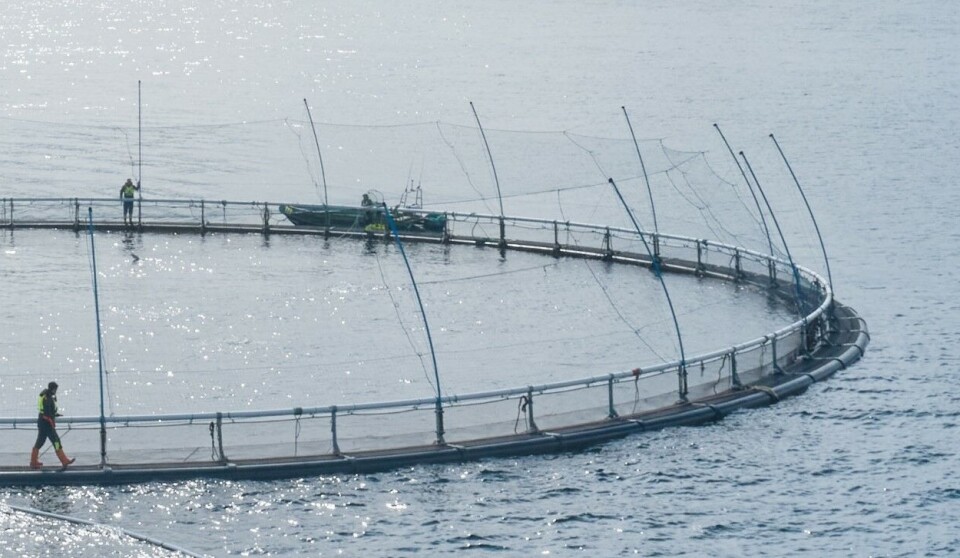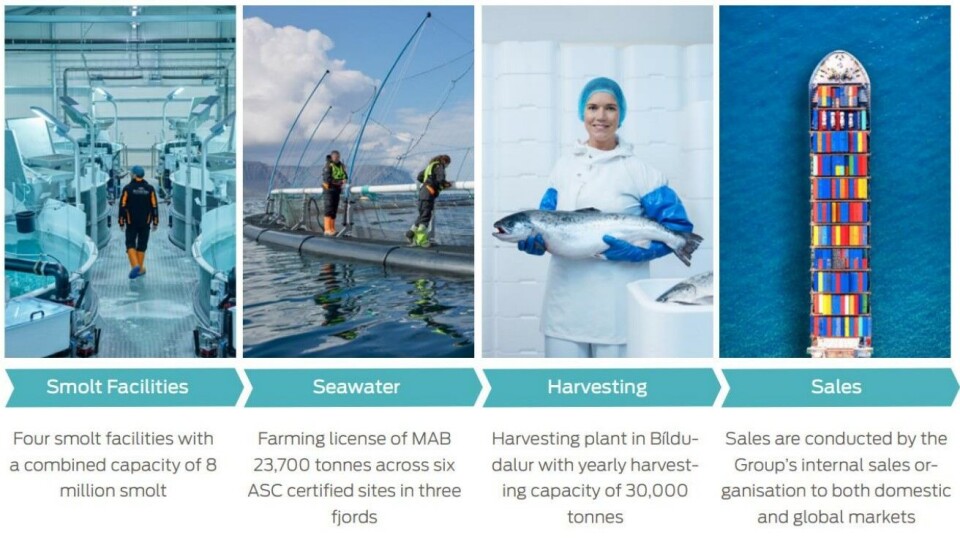
Icelandic Salmon seeks local investment for expansion
Fish farmer majority owned by SalMar to list on Nasdaq First North as it aims for 38,000 tonnes of MAB
Iceland’s largest salmon farmer, Icelandic Salmon, has been granted approval to list shares on the Nasdaq First North Iceland (First North) stock market. The first day of trading will be this Friday, September 29.
Icelandic Salmon, which is majority-owned (51.02%) by Norwegian salmon heavyweight SalMar, says the aim of the listing is to support its operational ambitions by enabling new local investors to participate in the company’s growth story and value creation. Investors will be able to buy affiliated shares, which are separate to the company’s shares traded on the Euronext Growth market in Norway.
“A First North listing is expected to contribute to an increased interest in the Affiliated Shares and the Company among investors, as well as among suppliers, media and other stakeholders,” writes Icelandic Salmon in a company description published ahead of First North's approval today .
“Additionally, a First North listing provides increased liquidity in the trading of the Affiliated Shares, which is advantageous for existing shareholders. Overall, the Company assesses that a First North listing of the Company’s Affiliated Shares will benefit the Company’s future development and it is on those grounds that the Company has applied for admission of trading of the Company’s Affiliated Shares on First North Iceland.”

Icelandic Salmon, which sells its fish under the Arnarlax brand, operates four smolt facilities with a combined capacity of 8 million smolts annually, and has eight farming sites in three separate fjords in the West Fjords region, enabling the use of an “all-in-all-out” alternating farming model.
“By allowing each farming site to fallow for a few months after each generation has been fully harvested, every new farming cycle starts its growth in a clear and naturally replenished sites. This technique reduces risk of biological hazards such as diseases and sea lice,” writes the company.
Icelandic Salmon has licences for 23,700 tonnes of maximum allowed biomass (MAB), spread between five locations in Arnarfjörður (including Fossfjörður) with a production capacity of 11,500 tonnes MAB and three locations in both Patreksfjörður and Tálknafjörður with a combined production capacity of 12,200 tonnes MAB.
14,500 tonnes in the pipeline
It also has an application is for 10,000 tonnes MAB in Ísafjarðardjúp which is anticipated to be approved during the second half of 2023, and a separate application for a further 4,500 tonnes capacity in Arnarfjörður on the existing sites and two new sites. No specific timeline for approval of that application has been provided by authorities. If both applications get the green light, the company will have MAB of more than 38,000 tonnes.
Icelandic Salmon performs all primary processing in its own facilities in the port of Bildudalur next to the company’s headquarters, with production capabilities of 30,000 tonnes per year. Fish are sold, primarily to customers in the United States or the European Union, by the company’s internal sales organisation.
In Icelandic Salmon’s opinion, the West Fjords of Iceland offer some advantages over other salmon farming regions.
“The hydrographic conditions on the West Fjords provide stable and moderate temperatures in the sea, resulting in reduced risk of sea lice and diseases and thus high yield on the biomass,” the company writes. “The temperatures typically fluctuate between 2 and 12 degrees °C, but rarely goes below 2 degrees °C. Further, there are currently only two other salmon farming company with licences to produce salmon in the West Fjords, which enables good biological control.”
Lower lice costs
The company adds that the direct costs associated with prevention and treatment of sea lice are increasing in the salmon farming industry, but that due to the moderate temperatures and lower farming density in Iceland, Icelandic Salmon can mitigate such health treatment costs.
“Despite marginally lower growth rates in cold waters, this is expected to be offset by the cost benefit of lower health treatment costs than other areas,” it writes.
Icelandic Salmon harvested 16,100 tonnes last year, up from 11,500 tonnes in 2021.
“Continuing investments in the Company’s growth projects, including investments in smolt facilities, are expected to bring the Company higher harvesting and revenues in nearby future. The Company expects to harvest 16,000 tonnes in 2023,” writes the company, which also points out an evolving legal framework for Iceland as a farming region that offers increased predictability.
Big potential
It adds that there are further opportunities for the salmon farming sector, which accounted for 4.9% of the total export value from Iceland in 2022 and has become “a pillar of the Icelandic economy”.
“Under the current Risk Assessment issued by The Marine Research Institute, 106,500 tonnes MAB of fertile salmon is allowed in Iceland. Of the 106,500 tonnes, licences have been issued for 86,800 tonnes. The assessment is re-evaluated every three years. The next evaluation is this year (2023). In addition, a total of 10 fjords have a calculated carrying capacity biomass of 144,500 tonnes, making Iceland, potentially, one of the largest Atlantic salmon producers in the world,” writes Icelandic Salmon.
“Production in Iceland for 2022 was around 45,000 tonnes (live weight) in total, with close to 42% of that produced by Icelandic Salmon.”























































